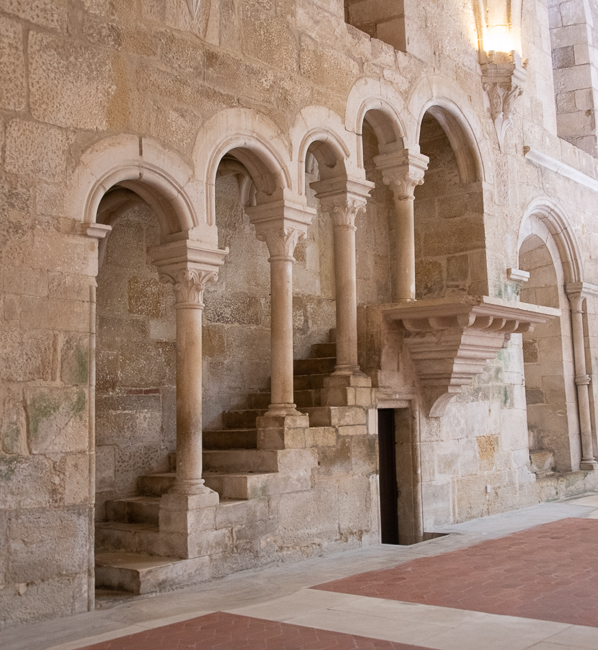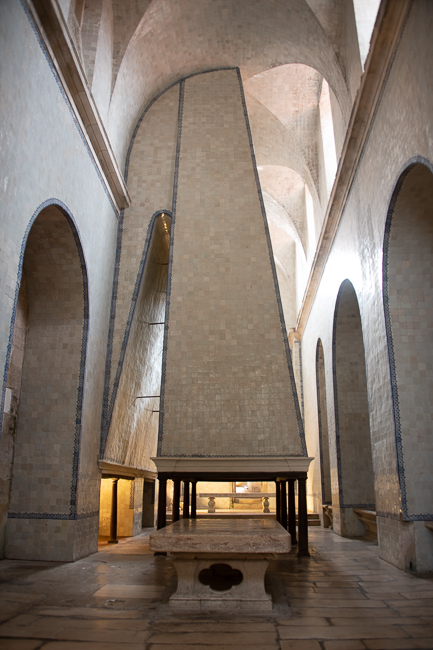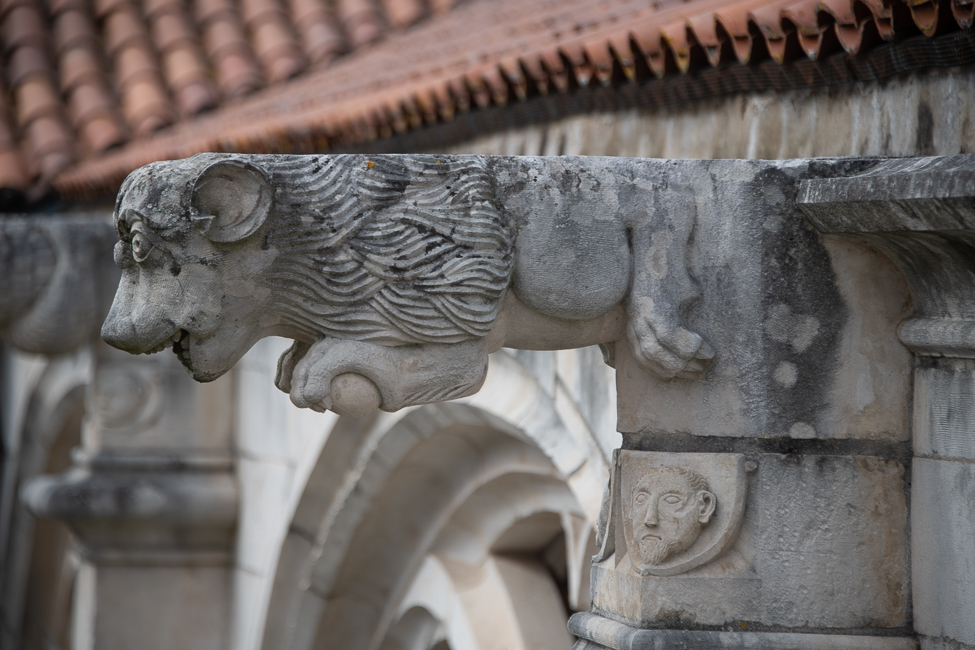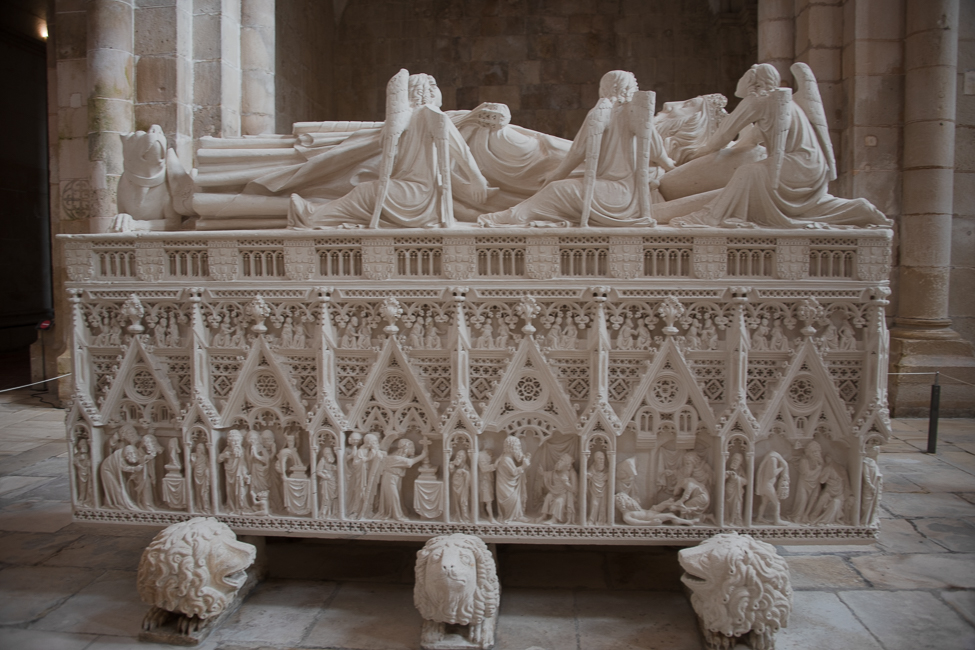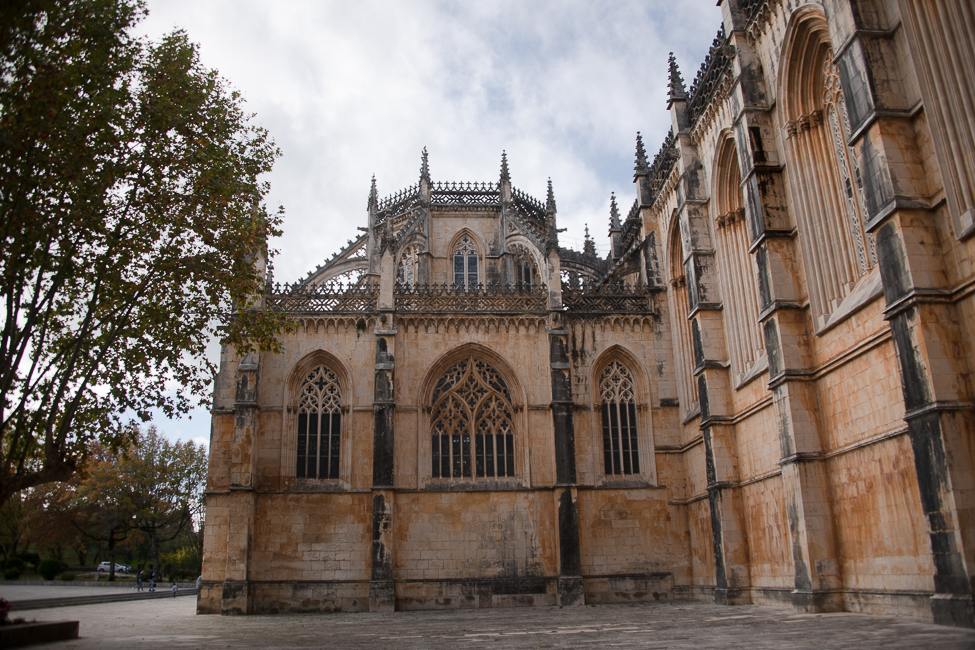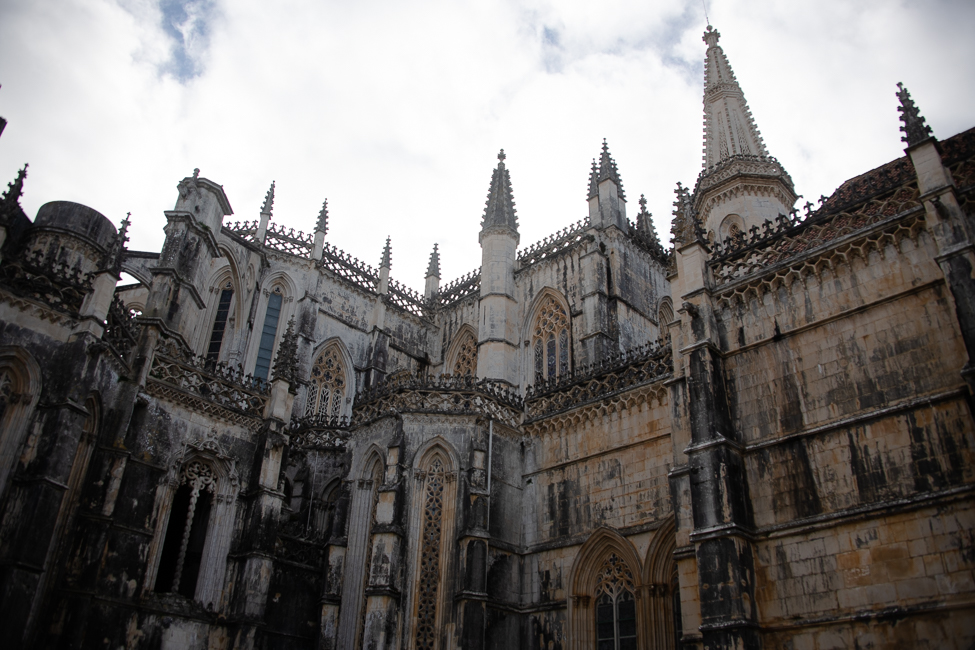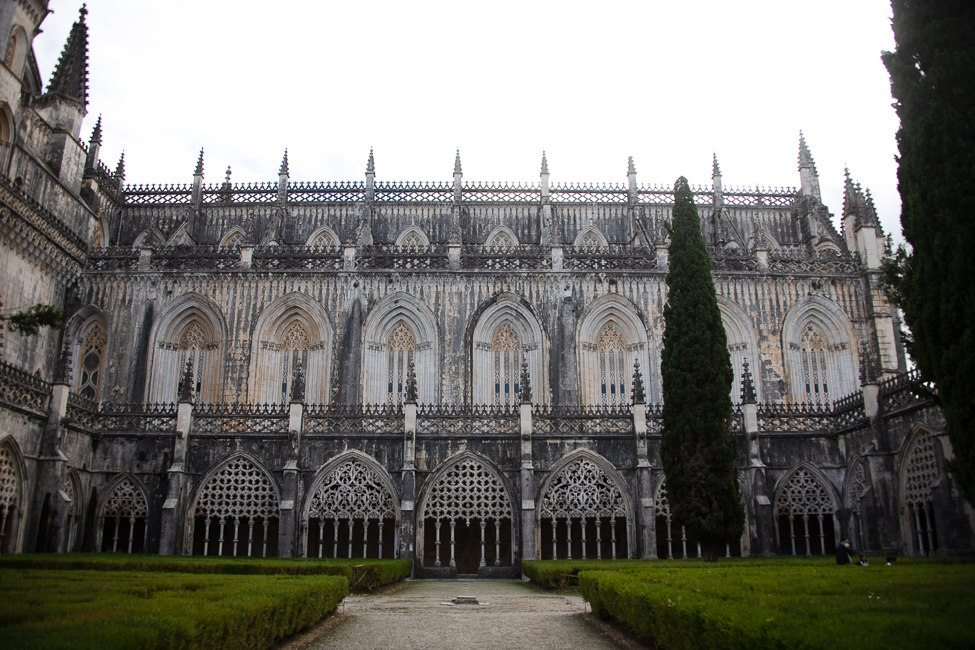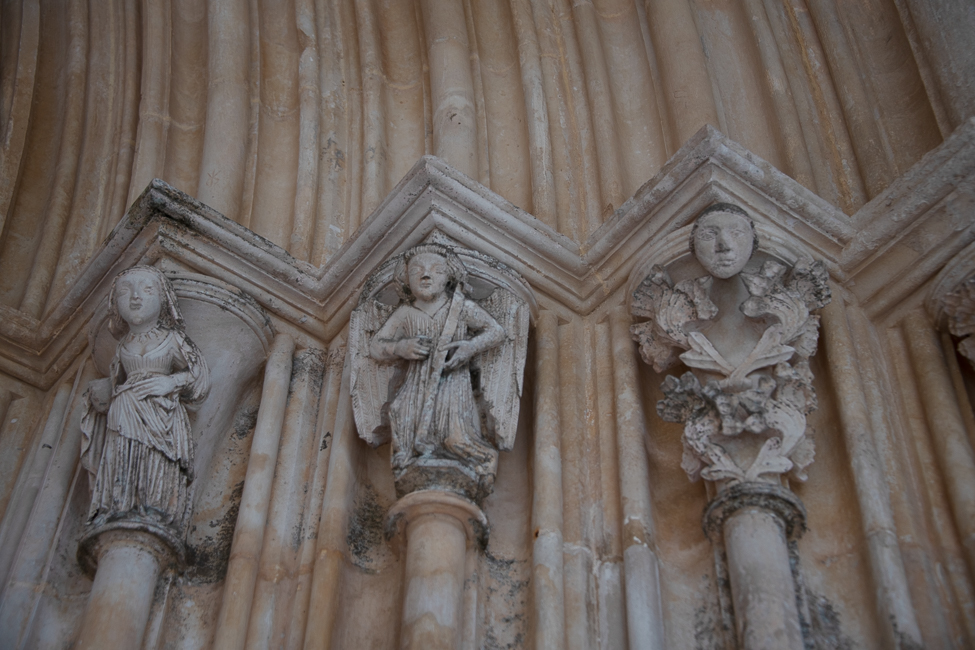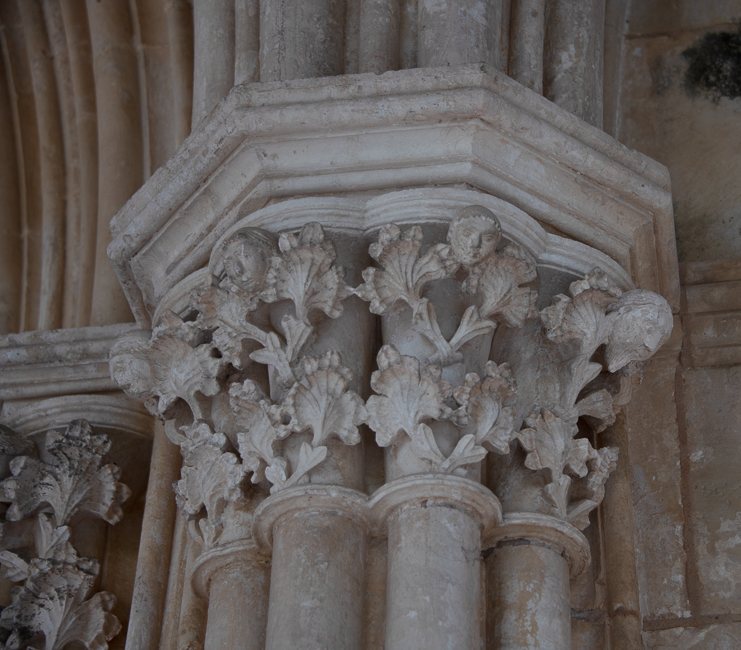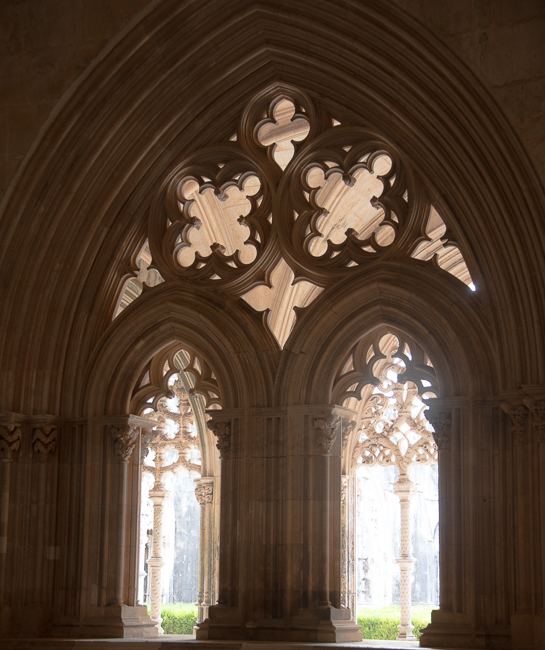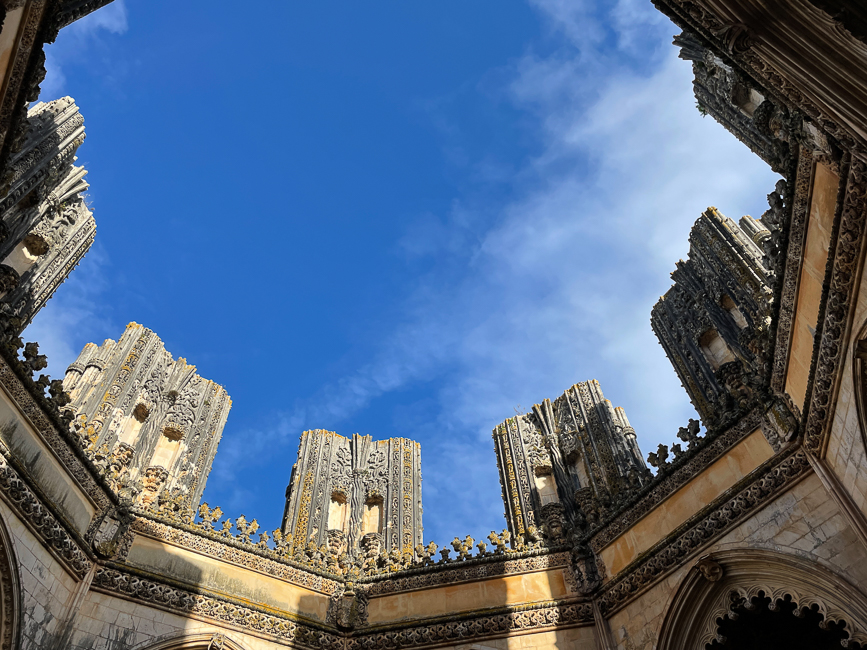November 2021
Alcobaça
The Alcobaça Monastery is one of the first buildings to be associated with the Cistercian Order in Portugal. It was founded in 1153 as a gift from the first Portuguese king, Afonso I (1112–1185) following the king’s conquest of the city of Santarém from the Moors in 1147. Construction on the monastery began in 1178. The church proper wasn’t completed until 1252. The church and adjacent monastery are the earliest examples of truly Gothic architecture in Portugal, and the church itself was the largest in Portugal at the time of its completion.
Sites throw around the word biggest, grandest, tallest and other adjectives so freely, so when I read this was the biggest Monastery of its time, I tossed it off, until I saw the kitchen.

The lavabo is in the corner of the King Dinis Cloister. Built during the reign of King Dinis, most likely between 1308 and 1311, it was designed by Domingo Domingues and Master Diogo.
These two tombs are what romance novels are made of. What drew me to them was the carvings. In 1340, the young Inês de Castro met Pedro when she arrived at court in his wife’s entourage. Inês and Pedro fell in love, and no one could stop their passion. In an attempt to do just that Pedro’s father, King Afonso IV, in an act of desperation, had Inês murdered before her children. Pedro, attempted an open rebellion in retaliation, but failed.
Two years after Inês’ death Pedro became king. Pedro ordered his vassals to pledge their obedience to Inês, and call her his wife.
Upon his death the two were interred side by side. No one knows who was responsible for the stunning carving. They contain detailed scenes of the final judgement, and the couple’s carved likenesses held aloft by angels. The lovers face one another, their tombs inscribed with the phrase “Até ao fim do mundo…” or “Until the end of the world…”
Batalha Monastery
After walking up to the Batalha Monastery, I almost did not go in, I could not take my eyes off the exterior ornamentation it was so spectacular. It is late Gothic architecture intermingled with the Portuguese Manueline style.
The monastery was built to thank the Virgin Mary for the Portuguese victory over the Castilians in the battle of Aljubarrota in 1385. It took over a century to build, starting in 1386 and ending circa 1517, spanning the reign of seven kings and fifteen architects.
Walking around the cloister of Batalha Monastery
Commissioned by King Duarte for his family this large 8 sided round with seven chapels was never completed due to the premature death of both the king, and the architect.
Both of these monasteries were so spectacular that I took hundreds of pictures, I hope I whittled it down to give you a good idea of the two amazing UNESCO World Heritage Sites.
Portugal Ponderings
A little snippet of a sign in a museum of Lisbon said that Portugal’s population began to dwindle with the colonialist expansion. That did not make any sense. But apparently Portugal has always suffered from a lack of population
According to the Portuguese government a projection of 2021 statistics showed that If external migration remained at the previous year level, the population would decline by 27,244 due to migration.
During the 18th century most estimates place the number of Portuguese migrants to Colonial Brazil, during the gold rush, at 600,000
Here are the countries once under Portuguese rule:
Brazil, since 1500s it gained independence from Portugal in 1822.
Angola, Mozambique, and Guinea-Bissau since the 1500s they gained independence in 1975.
Cape Verde and Sao Tome and Principe since the 1500s they gained independence in 1975.
Goa, India since the 1500s. In 1961, India annexed Goa from the Portuguese and it became an Indian state.
East Timor
The Portuguese colonized the eastern half of the island of Timor in the 16th century. In 1975, East Timor declared independence from Portugal.
Macau In the 16th century, Portugal handed over control of Macau to China in 1999.


